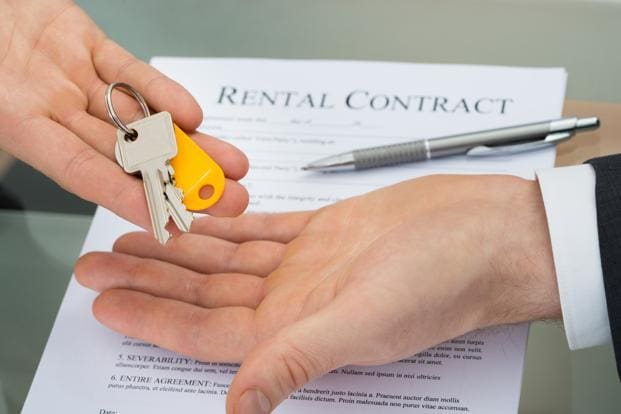There may come a time when you need to move out before your lease ends, and breaking a lease can be costly. One of the best alternatives is to find someone to take over your lease. A lease takeover allows a new occupant to assume responsibility for the remaining duration of the lease, helping you avoid penalties and ensuring a smooth transition.
However, transferring a lease is not as simple as handing over your keys. It requires careful planning, clear communication, and proper legal documentation.
This guide will walk you through the process step by step so you can successfully find someone to take over your lease while protecting your financial and legal interests.
Quick Summary
Transferring a lease can be a great way to avoid financial penalties when moving out early. The process starts with reviewing your lease agreement and obtaining approval from your landlord. A strong advertising strategy, including social media and rental forums, can help you find a replacement tenant quickly.
Screening potential tenants ensures they meet financial and rental history requirements, reducing the chances of issues later. If a lease transfer is not allowed, subletting may be an alternative, but it carries additional risks.
By following these steps and understanding legal considerations, you can successfully find someone to take over your lease with minimal stress.
Reviewing Your Lease Agreement
Before searching for a new tenant, the first step is reviewing your lease agreement. Some landlords allow lease transfers, while others may have strict conditions or outright prohibit them. Look for terms related to subletting, lease assignment, or early termination fees.
Some leases require written notice and consent from the landlord, while others may charge an administrative fee for processing the lease transfer. Knowing your lease terms will help you navigate the process without unexpected surprises.
If your lease does not mention lease transfers, check local tenant laws, as some areas allow tenants to assign their lease even if the contract does not explicitly permit it.
Communicating with Your Landlord
Once you understand your lease agreement, the next step is to communicate with your landlord. Being upfront and professional can increase the chances of approval. Explain your situation and ask about the process for transferring the lease.
Some landlords may prefer to handle the search for a new tenant themselves, while others will allow you to find a replacement as long as they meet certain criteria. Understanding your landlord’s requirements early on will help you avoid issues later.
If your landlord hesitates or refuses the lease transfer, check your lease and local laws to see if they are obligated to allow it. In some cases, landlords cannot unreasonably reject a qualified new tenant.
Preparing an Advertising Strategy
Finding a replacement tenant requires a solid advertising strategy. Start by gathering details about your rental, including:
- Monthly rent and utility costs
- Lease end date and renewal options
- Apartment size, features, and amenities
- Neighborhood highlights such as nearby schools, shopping centers, and public transportation
A well-prepared strategy ensures your listing reaches the right audience, helping you secure a new tenant faster.
Utilizing Social Media Platforms
Social media are one of the most effective ways to find a lease takeover candidate. Posting on platforms like Facebook Marketplace, Instagram, and Twitter can help you reach people actively searching for rentals.
Use relevant hashtags and location-based groups to increase visibility. Asking friends and family to share your post can also expand your reach.
Joining Local Rental Groups and Forums
Many cities and college towns have online rental groups and forums where tenants look for lease takeovers. Platforms like Facebook Groups, Reddit, and Craigslist are popular places where renters connect.
When posting in these groups, be clear and direct. Include photos, rental terms, and any special incentives, such as offering to cover part of the rent for the first month.
Creating an Attractive Listing
Your rental listing is the first impression potential tenants will have, so making it attractive is essential. A good listing should include:
- High-quality photos of the unit
- A clear and concise description
- Monthly rent and deposit details
- Any additional perks such as free parking or included utilities
- Contact information for inquiries
Highlighting the benefits of the apartment and the lease terms can help your listing stand out from others.
Screening Potential Tenants
Once you receive inquiries, it is important to screen potential tenants to ensure they meet your landlord’s requirements. Some key factors to check include:
- Credit history and financial stability
- Rental history and references
- Employment status
- Any past eviction records
Some landlords may conduct background checks themselves, while others may require you to submit potential candidates for approval. Being proactive in this process can speed up the lease transfer.
Conducting Property Showings
After finding interested candidates, schedule property showings to allow them to see the unit in person. Be transparent about the condition of the apartment and any lease obligations they will be taking over.
A successful property showing can help potential tenants feel more confident about the lease takeover.
Finalizing the Lease Transfer Process
Once you find a qualified tenant, work with your landlord to finalize the lease transfer. This may involve:
- Having the new tenant complete a rental application
- Signing a lease assignment agreement
- Paying any administrative fees required by the landlord
Ensure all agreements are in writing to protect yourself from any future disputes.
Legal Considerations and Documentation
A lease transfer is a legal process, so proper documentation is essential. Some key documents involved in a lease transfer may include:
- Lease assignment agreement
- New tenant background check approval
- Written consent from the landlord
- A move-out checklist to document the unit’s condition
Review local tenant laws to ensure you are following the correct legal procedures. Consulting a tenant rights organization or legal professional may also be helpful if you encounter issues.
Exploring Subletting as an Alternative
If your landlord does not allow lease transfers, another option is to sublet the unit. Subletting means you remain legally responsible for the lease while another person pays rent and occupies the apartment.
Subletting can be a good short-term solution, but it carries risks. If the subtenant fails to pay rent or damages the property, you could be held accountable. Make sure to negotiate terms clearly and have a written agreement in place.
Managing Vacancy Concerns
If you are struggling to find someone to take over your lease, you may need to adjust your approach. Consider lowering the rent slightly, offering to pay part of the transfer fee, or expanding your advertising efforts.
A vacancy can be a financial burden, so acting quickly and using multiple platforms to advertise your rental can increase your chances of success.





